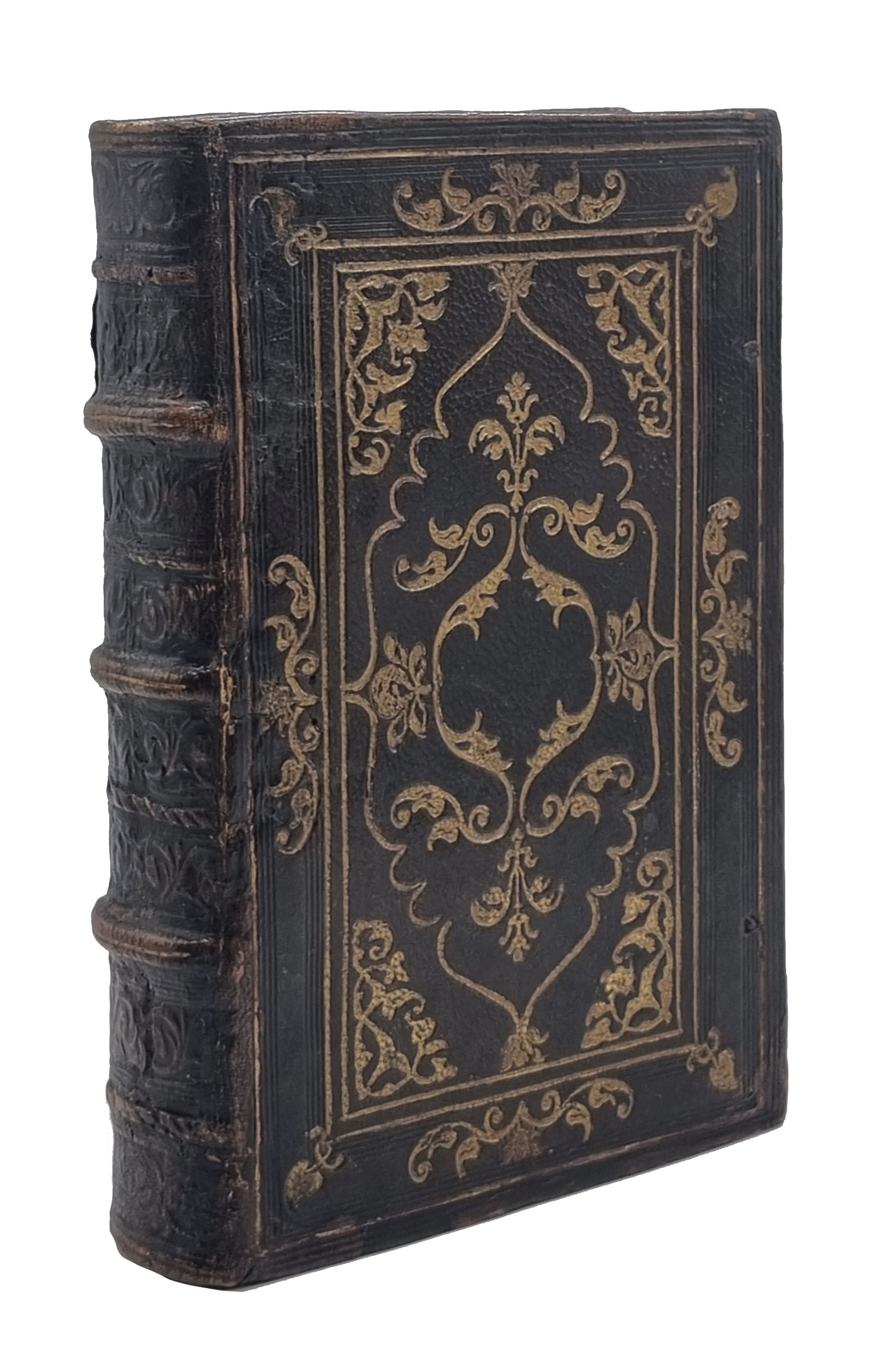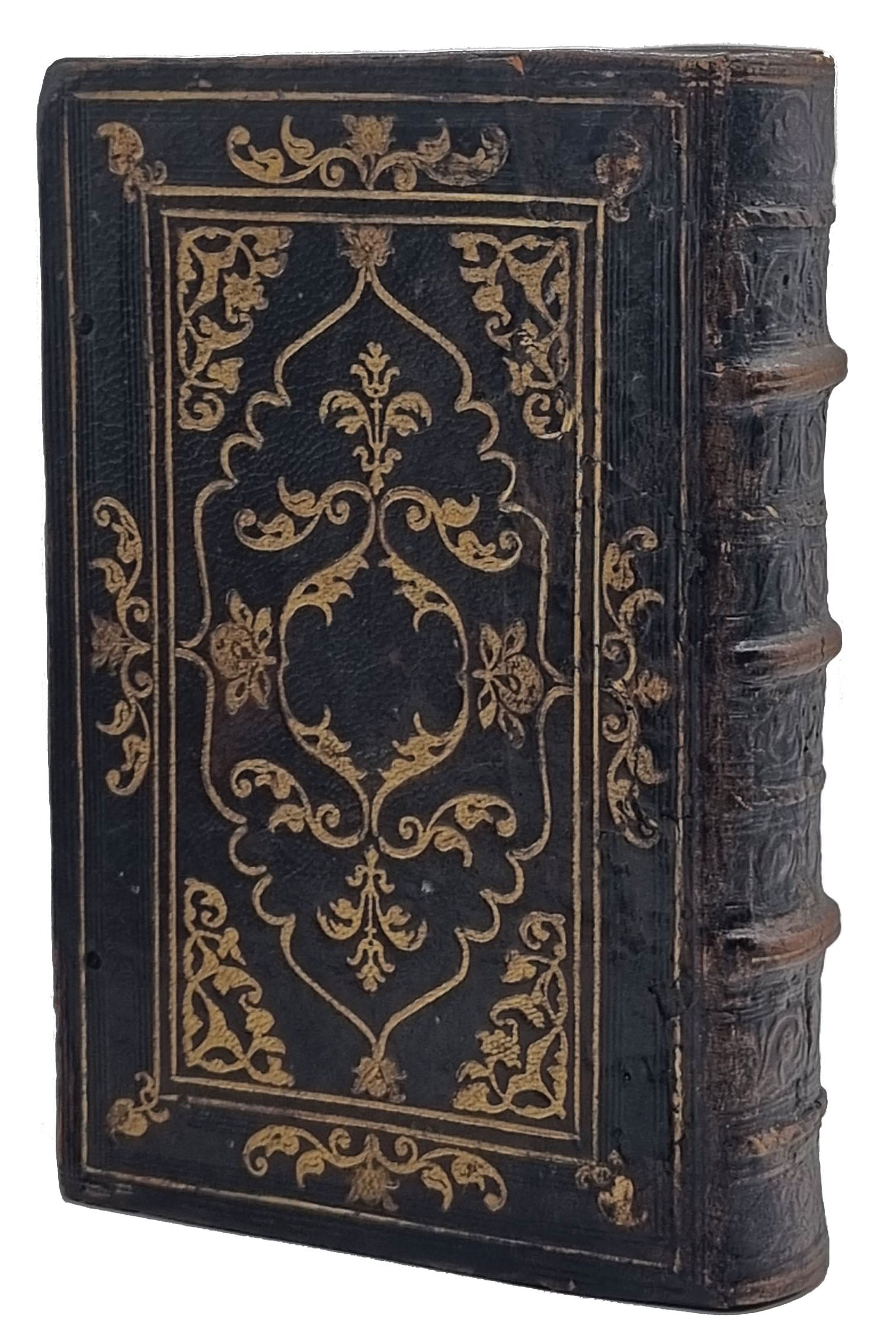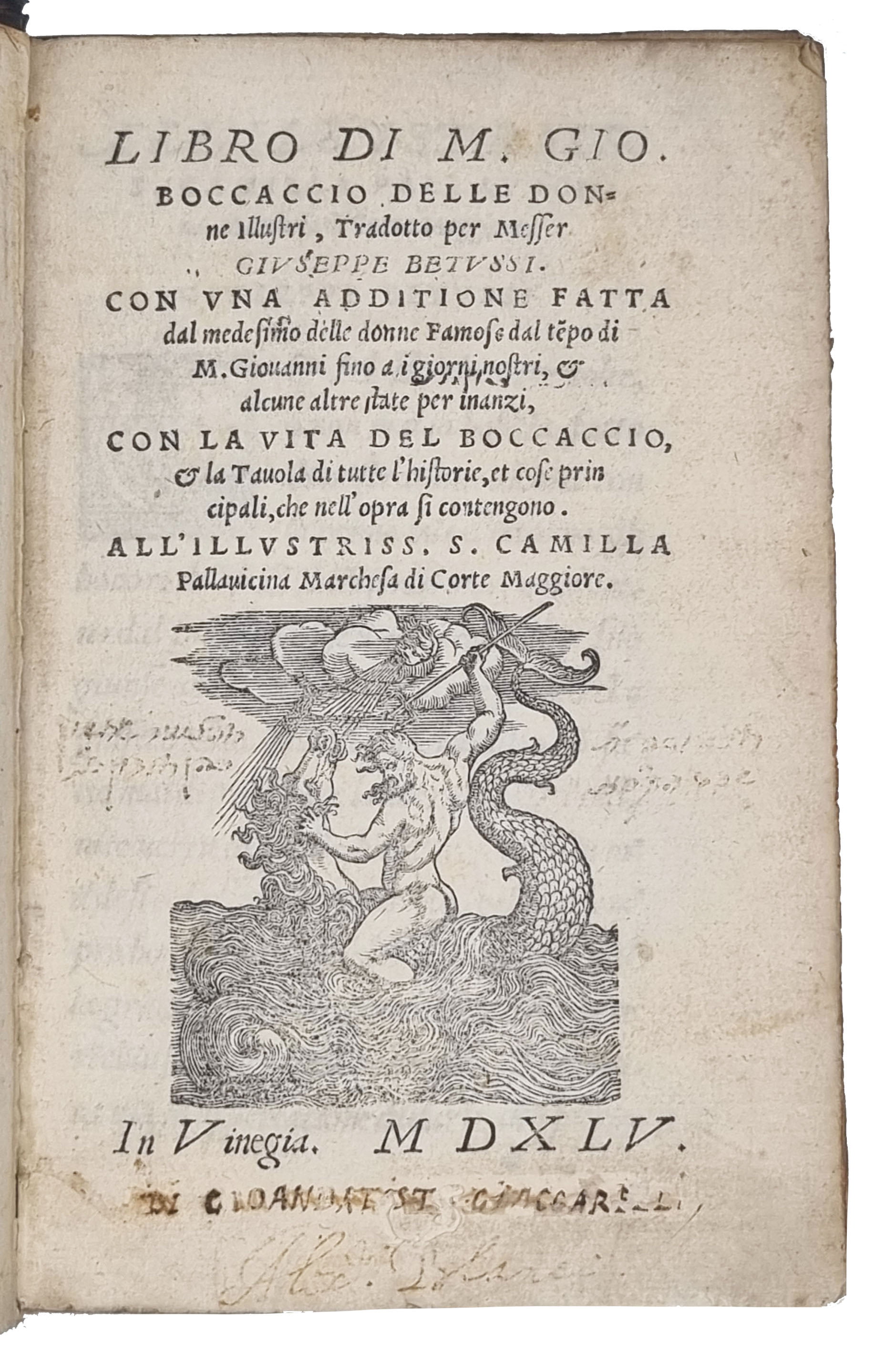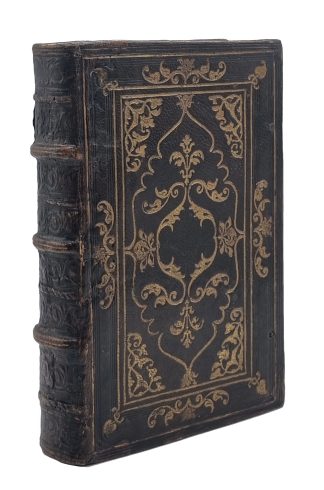BOCCACCIO, Giovanni
EXQUISITE ‘FUGGER BINDER’ BINDING
Libro delle donne illustri.
Venezia, per Comin da Trino a instanza di Andrea Arrivabene, 1545£9,500.00
FIRST EDITION thus. 8vo. ff. (xxiv) 139 (i). Italic letter, little Roman. Woodcut vignette to t-p, decorated initials. Marginal worm trails to first and last few ll., some thumbing, mainly marginal spotting in places, intermittent faint oil stain to upper margin, small tear to lower margin of fol. 192. A very good copy in contemporary Venetian olive goatskin, traces of ties, triple blind ruled to a panel design, outer border single gilt ruled with gilt lotus tools and gilt apple tools to corners, centre panel double gilt ruled, gilt cornerpieces with leafy tendrils, large gilt lozenge with gouges, lotus tools and fleurons, spine in four compartments with single gilt ruled raised bands and rolls of leafy tendrils in blind, additional false bands, very minor expert repair to joints and extremities, upper joint slightly cracked, edges gilt and gauffered. C19 bibliographical note to fep, Italian motto (faded) and early ex-libris ‘Di Gioanbattista Giaccarelli’ and ‘Alex. (?)’ (faded) at foot of t-p, title inked to lower edge.
The exquisite gilt binding can be attributed to the ‘Fugger binder’ (also ‘Venetian Apple binder’). The tooling reprises very closely the fleurons, lotus and apple tools in de Marinis II, 1707 ter. and 2165, and, especially, the cornerpieces on the centre panel and the blind tooling on the spine in Davis III, 296.
Handsomely bound copy of the first edition in Italian of this important work by Boccaccio. One of the ‘Three Crowns’ of Italian literature, Giovanni Boccaccio (1313-75) was the son of a Florentine merchant who found his poetic vocation during his stay as a canon law student in Naples. His ‘Il Filostrato’, ‘Teseida’ and ‘Decameron’ had a fundamental influence on European authors, including Chaucer. After becoming acquainted with Petrarch and other humanists in the 1350s, he mostly wrote in Latin. ‘De mulieribus claris’, which took 15 years to complete from 1361 to 1375, was not translated into Italian until 1545. The ‘Libro’ is a gallery of the biographies of 106 women—mythological, historical and contemporary— presented as ‘exempla’ of virtuous or wicked behaviour, following the genre of ‘de viris illustribus’. The translator, Giuseppe Betussi, a renowned C16 writer and supporter of Italian as a literary language, included in the edition a biography of Boccaccio and additional lives of his own composition. Among Boccaccio’s mythological women were the berated Helen, wife of King Menelaus, whose kidnapping by Paris started the Trojan war, and Medusa Gorgone, wearing hair in the form of snakes—a feature which Boccaccio dismissed as myth in favour of an historical version in which she was presented as a powerful queen deprived of her wealth by Perseus. The most remarkable of the historical women, Pope Joan of England, was a great scholarly wit who, after passing herself off as a man for years, was appointed pope; she was unmasked whilst giving birth to a secret child during a procession, a fact which, Boccaccio writes, happened because of God’s ‘compassion towards his flock, guided in that fashion by a woman’. To those of Boccaccio, Betussi added biographies focusing on women who lived between Boccaccio’s times and his own, like Isabella, Queen of Spain, celebrated for her support of the crusades in the East, and Vittoria Colonna, a ‘nobildonna’, ‘literary wit’ and ‘devout widow’. A beautifully bound milestone of European literature.
USTC 814823; Brunet I, 991. Not in BM STC It., Gamba, Gay, Fontanini or Cicognara.In stock





